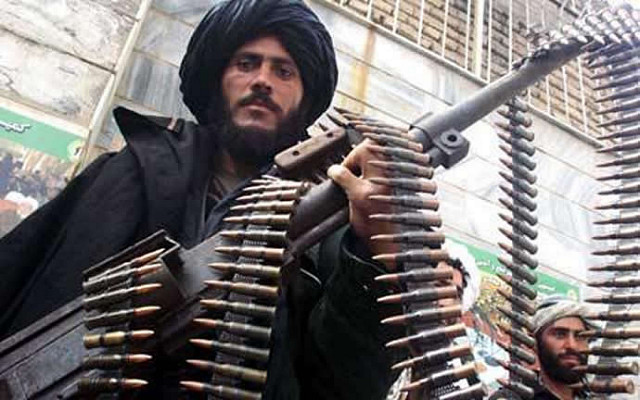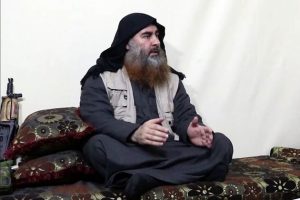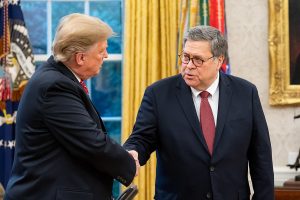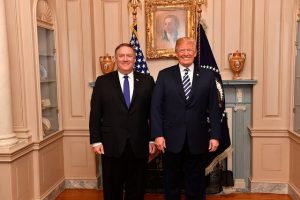by Paul R. Pillar
The battle for Raqqa is now being waged, and the diverse forces that have been helping to extinguish the self-proclaimed caliphate of the so-called Islamic State (ISIS or IS) soon must face squarely what becomes of the portion of Syria that IS had controlled. It may be useful to recall an earlier and somewhat similar situation in which the defeat of a common enemy led not to peace and stability but instead to fighting among the victors. This occurred some two decades ago in another land in which, like Syria, the United States struggled to formulate a strategy: Afghanistan.
After the Soviets withdrew from Afghanistan in 1989, the pro-Soviet Najibullah regime hung on for another three years before succumbing to the militias, known collectively as mujahedin, that with foreign backing (including from the United States) had fought the Soviets throughout the 1980s. This mujahedin victory was followed by an accord providing for a power-sharing arrangement, but the agreement never fully took hold. The warlords who had been allies in fighting against the Soviets and Najibullah fell out among themselves. A new phase of the Afghan civil war ensued, which for the next few years saw fighting, especially in the cities, that was at least as intense as the decade-long combat against the Soviets. This phase of the war concluded as a new movement of religious radicals, known as the Taliban and supported by Pakistan, swept aside the brawling militias in most of the country and imposed their own version of order in south and central Afghanistan. The Taliban are, of course, today widely considered to be a principal adversary in Afghanistan of the United States and its allies.
There are obvious differences between this piece of Afghan history and the current situation in eastern Syria, but several observations about the former nevertheless apply as well to the latter.
In both cases, for instance, there was too little advance planning or effort at accommodation that looked beyond whatever was the immediate military objective. This deficiency was at least as true of the United States as of any of the other external or internal participants in either war.
There was no military solution to the differences and disagreements that ensued after the earlier enemy was defeated. No single Afghan militia was strong enough to overpower the rest. Even the Taliban never gained control of all of Afghanistan; a coalition in the northern portion of the country continued to resist. In Syria, the Bashar al-Assad regime, especially with its Russian and Iranian backing, is not going away. But neither does it have the strength (and its foreign backers do not have the will) to gain control over all Syrian territory and to wipe out the sources of resistance to the regime.
The new phase of civil war reflected bloated ambitions and mission creep stimulated by earlier victories, not well-considered objectives that would justify a prolongation of the war. Gulbuddin Hekmatyar was the most destructive of the power-hungry chieftains in Afghanistan, but hardly the only one. In the Syrian war, echoes of Afghanistan are heard in talk, including in debates on U.S. policy, about moving against the interests of Russia, Iran, or the Assad regime as part of a military expedition that was supposed to have been all about defeating IS.
The problems, threats, and adversaries that emerge from prolongation of the civil war into a new phase may take new forms that are difficult to foresee. In Afghanistan in 1992, as Najibullah’s regime fell and the militia leaders were just beginning a new round of conflict among themselves, it would have been hard to anticipate the Taliban emerging and sweeping to power as it soon would. In Syria, violent extremism bred by chaos and conflict after the fall of Raqqa may take non-IS forms for which we do not yet have a label.
Most important, later problems and security threats have resulted from prolongation of the armed conflict itself, not from specific participants in that conflict winning or losing, or seeing their influence expand or contract. In Afghanistan in the early 1990s, it was not the fortunes of any one warlord or militia that defined the country’s political and security future. It was the violent quarrel among them that gave the Taliban their opening. The Taliban would not have had their opportunity if power-sharing had been fully and faithfully implemented. In a similar dynamic in Syria, the civil war itself, not the existence of a specific regime or its longstanding foreign alliances, gave IS the opening to score its dramatic gains. The same can be expected with any post-IS radical movements.
Despite the differences between the two cases, a major conclusion applying to both is that minimizing future security problems requires de-escalation and accommodation, not prolongation of warfare and mission creep. This specifically means not using the occasion of victory over one enemy to get in some whacks against someone else one considers an adversary.
From the mid-1990s, the subsequent few years of Afghan history saw al-Qaeda’s alliance with the Taliban, 9/11, and a direct U.S. military intervention beginning in late 2001 and continuing, seemingly without end, today. One endless war, with a changing cast of adversaries, is too much; the United States does not need another one in Syria.
Photo: Taliban fighter (courtesy newsonline via Flickr)






I think Paul R. Pillar is being far too kind to the United States.
Seen in retrospect, the former Soviet Unions were the real heroes for trying to stop the establishment and growth of extremist Islamist terrorism in Afghanistan.
The United States – along with their wholly unsavoury ally, Pakistan – fatally undermined the fight against what became international terrorism.
As your contributor points out, Afghanistan degenerated into a wholly anarchic chaos.
Sound familiar? It should.
The United States went on to create a similar situation in Iraq.
For now, events there have been overshadowed by events in Syria – but how long will that last?
Not satisfied with creating anarchic chaos in two countries, the United States and minor allies went on to topple Qaddafi and to plunge Libya into utter chaos, spawning further extremist terrorism across the Middle East and North Africa.
Now, they are achieving – if that is the right word – a similar outcome in Syria.
Are the United States political elite all total bungling idiots or is there another explanation?
The one regime that must look upon these US outcomes with favour is zionist Israel.
All this upset and uncertainty suits their Yinon Plan Eretz Yisrael aspirations.
I can only assume that instability and chaos is exactly what the US and Israel want.
In which case, look forward to more of the same in the Middle East.
Jordan’s turn cannot be very much longer in coming…….
The lesson of Afgahnistan (and Vietnam, among others) is that state parties always lose guerilla wars. In Syria, the state parties are Assad and Putin. They will ultimately lose the war there. It would be very easy to de-escalate and accomodate if it was just a matter of Assad. Indeed, if it was, there would probably have been no escalation in the first place and an accomodation would have been reached years ago. The disturbance factor is Putin. For a whole host of moral and practical reasons, Putin has to be removed from Ukraine and since he has been foolish enough to bog himself down in Syria it’s logical to fight him there, where he’s most vulnerable. If Putin wants to keep Assad, then there has to be de-escalation and accomodation in Ukraine, something Putin shows no sign of being willing to do.
You are writing complete nonsense.
Why should Syria, Russia and Iran stop now they are crushing IS and the other terrorists?
It is the Americans, Sauds and other reprobates who have backed the losing side.
One concession might be for Assad to engage with the Kurds to offer them some autonomy.
That might swing them over as reliable allies to complete the destruction of all terrorists.
Who – seriously – wants to see the neo-nazis and fascists in Ukraine taking control there?
It is no one’s interest for them to continue in power.
Eventually, the western nations will realise this and withdraw their support from them.